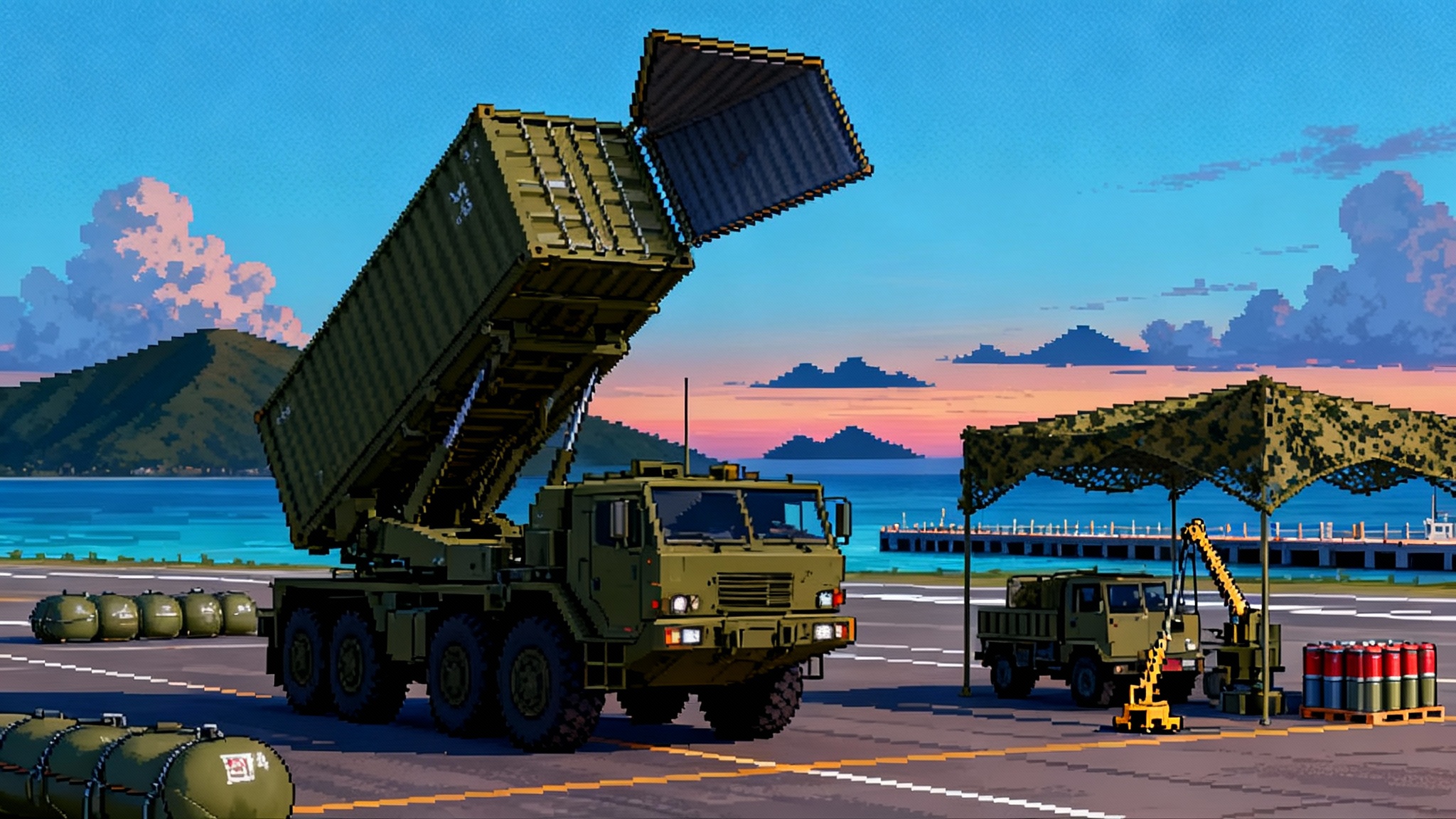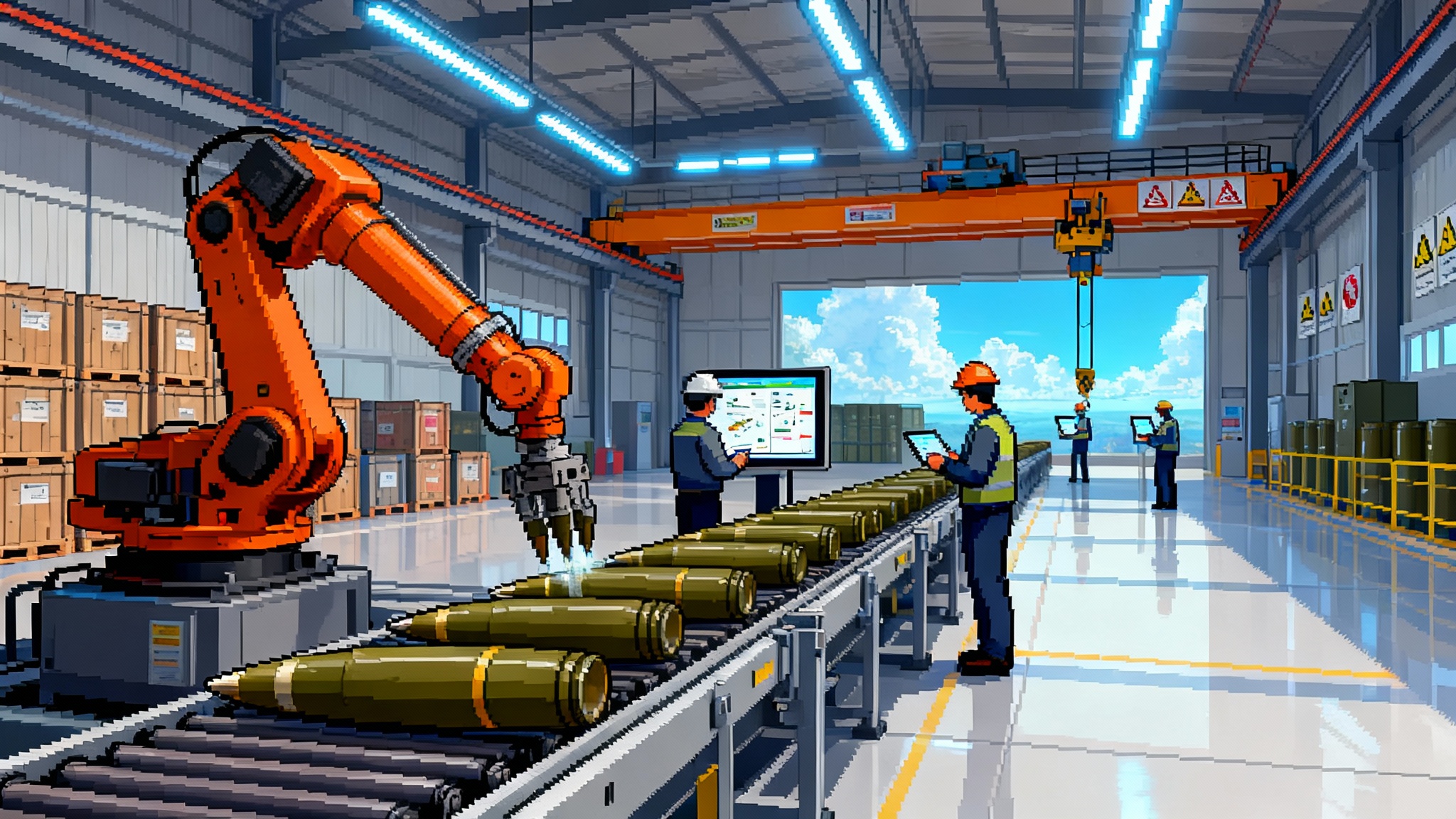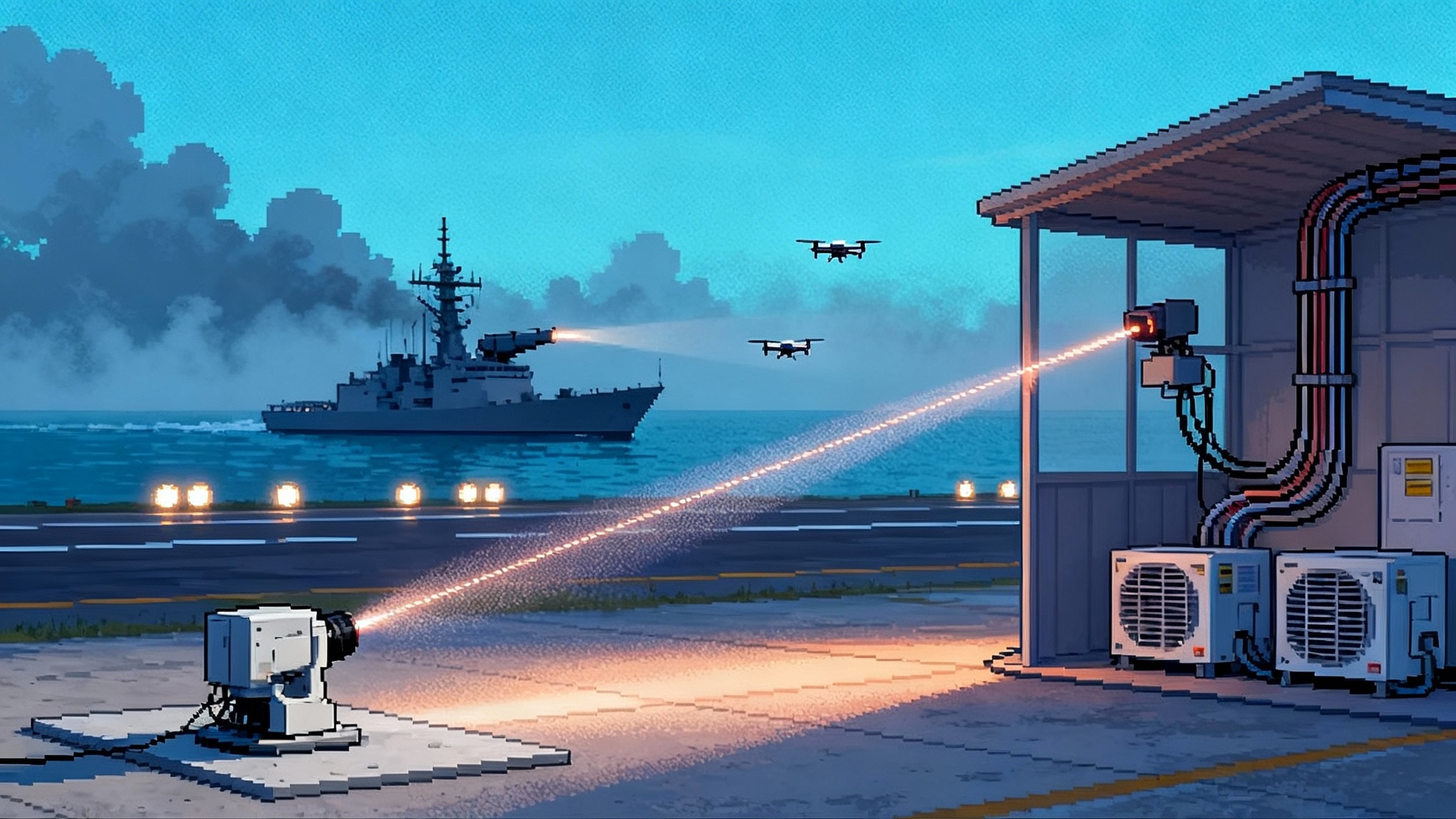Microreactors Move First: DoD’s 2025 Breakthrough, 2028 Race
This summer and fall, the Army’s Janus launch, the Air Force’s Eielson pilot, and Project Pele core fabrication pushed microreactors from concept to calendar. Here is how mobile, HALEU‑fueled power could reshape contested logistics by 2028.

The summer and fall stack that changed the timeline
Three milestones arrived in quick succession and turned microreactors from a someday technology into a schedule with dates.
- The Army formally launched its Janus program in mid October, positioning commercially owned microreactors to deliver assured power to selected installations by 2028. See the official announcement: Army unveils Janus program.
- The Air Force’s microreactor pilot at Eielson Air Force Base in Alaska reached a key contracting waypoint in June with a Notice of Intent to Award to Oklo. Read the milestone update: Air Force microreactor pilot milestone.
- The Department of Defense’s transportable microreactor, Project Pele, began core fabrication in July at BWX Technologies, locking in hardware timelines and validating that this class of nuclear systems is moving from drawings to metal.
Viewed together, that stack of actions pulls microreactors into the near‑term planning cycle. Instead of debating if microreactors will matter, the Department of Defense is now debating where, in what order, and under which regulatory route.
What “mobile, HALEU, islanded” really means on the ground
Microreactors are compact nuclear power plants that fit into a handful of standard containers and deliver one to a few megawatts of continuous power for years without refueling. Project Pele’s reference design targets roughly 1.5 megawatts of electricity with gas cooling and full transportability. In practice, a commander can stage power the way they stage fuel bladders or radar dishes, except the power source arrives in sealed modules, plugs into a hardened microgrid, and then runs without trucks for multiple campaigns.
High‑assay low‑enriched uranium (HALEU) is the enabler. Enriching uranium to between 5 percent and 20 percent U‑235 allows compact cores with long life and strong thermal margins. The United States restarted domestic HALEU production at commercial scale in 2023 and expanded contract coverage in 2025. Output remains modest, but sufficient to seed early deployments and training stocks for pilot units.
Islanded microgrids are the second pillar. They are local electrical networks that can connect to a regional utility when it is stable and safe, but instantly separate and continue operating if the main grid is disrupted. When a microreactor anchors an islanded microgrid, the base becomes its own utility. Batteries handle fast transients, flywheels smooth pulses, and the microreactor provides the steady backbone. The result is less diesel dependence, fewer vulnerable convoys, and a base that can harden its power profile instead of hoping for grid luck.
The load side is driving the urgency
The next wave of power demand on U.S. installations is not just about lights and heat. It is about mission‑critical systems that behave like industrial loads.
- High‑power radars. Modern AESA radars draw megawatt‑class continuous power and have punishing availability requirements. Every cold start, voltage dip, and thermal cycle degrades performance or shortens component life. A microreactor‑stabilized microgrid reduces those cycles, which preserves radar sensitivity and uptime. The practical effect is longer dwell, wider coverage, and fewer missed tracks. See how space‑based sensors tie in via SDA’s kill web architecture.
- Directed energy. A 300‑kilowatt‑class laser system does not sip energy. It gulps. The weapon, power conditioning, and thermal management can pull several megawatts at peak and require continuous housekeeping power. Pairing a microreactor with a high‑speed battery or supercapacitor block lets a base charge the pulse bank while keeping optics and chillers in their sweet spot. For context on fielded systems, review Leonidas counter‑drone lessons.
- Edge AI and data fusion. Expeditionary compute that ingests sensor feeds and runs inference on site is both a power and thermal problem. The most deployable containerized data centers today often come in one‑ to five‑megawatt blocks with tight cooling envelopes. A microreactor gives planners a predictable baseload so that advanced cooling and workload scheduling can be tuned without constantly chasing diesel deliveries.
The common thread is this: resilient power is now an operational advantage. If a base can hold its power steady while the regional grid flickers or fuel routes are contested, the base can keep its sensors, weapons, and decision nodes online.
Two regulatory lanes, one aim
There are two distinct paths to get microreactors on U.S. bases.
- Commercial ownership under NRC licensing. The Eielson pilot sits in this lane. The Department of the Air Force and the Defense Logistics Agency structured a power‑purchase agreement in which a vendor builds, owns, operates, and decommissions a licensed microreactor that serves the installation’s critical loads.
- Army‑led deployment with defense executive authority. The Janus program signals a complementary lane, with the Army taking an executive‑agent role, drawing on Project Pele experience, and using milestone‑based contracting to accelerate real hardware while leveraging Department of Energy expertise.
The two lanes are not competitors. They are hedges against bottlenecks. If one site needs speed within existing commercial frameworks, the Air Force model applies. If another needs a defense‑specific pathfinder anchored by Army execution and transportability, Janus applies. Both lanes will inform each other’s checklists, training, and safety cases.
The fuel constraint is real, but solvable on a 2028 clock
Fuel supply is the tightest constraint in the near term. In 2024 the United States banned imports of Russian enriched uranium with temporary waivers to avoid disrupting civilian reactors, while unlocking billions for domestic conversion and enrichment. That was necessary for national energy security and defense microreactor plans. It also means the first wave of HALEU will be precious, scheduled, and scrutinized.
On the supply side, initial domestic HALEU production is underway with options to extend output year by year. On the demand side, early defense units are small by grid standards. A handful of one‑ to five‑megawatt microreactors do not consume the volumes that a fleet of large reactors would. That mismatch buys time to scale enrichment, deconversion, and fuel fabrication while still hitting the 2028 objective for the first operating units on bases.
Cyber and physical security must be designed in, not bolted on
Treat the microreactor plus microgrid as a cyber‑physical system.
- Network architecture: Physically separate reactor safety systems from balance of plant and from the installation’s enterprise network. Use one‑way data diodes for monitoring, not two‑way control. Apply zero‑trust rules on every non‑safety segment.
- Supply chain: Lock down firmware baselines for SCADA, relays, and smart inverters. Require component provenance and tamper‑evident seals on spares. Threat‑model the vendor’s remote access tools and either remove them or gate them behind on‑site physical enablement.
- Drills and red teams: Run combined cyber and physical exercises that assume a loss of the utility grid, an attempted cyber intrusion on the microgrid controllers, and a concurrent physical security incident. Validate that the island can ride through each stress without tripping the reactor or dropping critical loads.
- Recovery plans: Pre‑stage cold‑spare controllers and hardened images. Practice bare‑metal restores in a lab that mirrors the as‑built configuration.
From pilots to deployable theater power nodes
If 2025 was about green lights and contracts, 2026 through 2028 must be about repeatable field playbooks. Here is a focused path from pilot to theater‑ready nodes.
- Standardize the power block. Treat the microreactor plus battery plus switchgear as a pre‑engineered kit with known interfaces. Project Pele already packages its plant into four shipping containers. Add a containerized battery with shock and thermal management tuned to each mission and a standard high‑speed disconnect for load banks.
- Pre‑certify the microgrid. Use a common template for islanded microgrids that covers grounding, protection coordination, and black‑start procedures. Include a menu of tested inverter settings for radar loads, directed‑energy loads, and data‑center loads.
- Lock the contracting and licensing path early. If the site fits the NRC lane, push the vendor to submit a complete application with an aggressive schedule and a clear decommissioning plan. If the site fits the Army lane, use Janus milestone gates tied to specific site work, fuel delivery, and initial criticality. Shared artifacts will shrink paperwork and training time on both sides.
- Train to sustain. Build a joint schoolhouse module that certifies operators for the microgrid, not just the reactor vendor’s interface. Include diesel‑hybrid operations, load‑shedding priorities for mission sets, and emergency procedures for both cyber and physical incidents. Use the Eielson pilot’s public engagement and procedures as seeds for curriculum and community relations.
- Stage spares and fuel smartly. Align HALEU deliveries with installation windows, and pre‑stage non‑nuclear spares like inverters, relays, and pumps in theater depots. The objective is to make non‑nuclear maintenance the pacing item while the core continues to run.
- Wargame the logistics impact. Put fuel convoy reduction, radar uptime, and directed‑energy sortie rates into the models. The measure of merit is not megawatts installed. It is hours of mission power delivered during grid outages and contested resupply.
Why this flips contested logistics
Diesel is heavy. Convoys are visible and vulnerable. Every extra fuel truck is another schedule to guard and another route to clear. A one‑ to five‑megawatt microreactor that runs for years without refueling removes thousands of truck miles from the plan, shrinks the force‑protection problem, and reduces the attack surface on the base’s power system. When microreactors anchor islanded microgrids, commanders can set power like they set ammunition levels, with confidence that a single cyber incident or a regional storm will not shut down radars or the data‑fusion cell.
There is also an industrial‑base dividend. Janus milestone payments and the Air Force pilot’s bankable power‑purchase structure give vendors two ways to finance first‑of‑a‑kind and next‑of‑kind units. That means factory learning curves, which means faster deployments and lower costs after the initial builds. For the broader production context, see the 2025 factory surge.
What to watch next
- Eielson regulatory milestones: NRC docketing updates, environmental reviews, and site preparations as indicators that the first military microreactor is moving from contract to construction.
- Janus site selections: initial installations and common siting and safety criteria, revealing which missions benefit first.
- Project Pele manufacturing and assembly: core fabrication progress and integrated system tests. Factory acceptance, not ribbon cuttings, is the key indicator for a transportable unit on schedule.
- HALEU capacity: contract options exercised for domestic enrichment and deconversion. The steadier the fuel timeline, the smoother the commissioning calendar.
The bottom line
This was the year microreactors stopped being a talking point and started being a program of record with dates. The Army’s Janus launch, the Air Force’s Eielson pilot, and Project Pele’s core fabrication stack into a simple picture: by 2028, the Department of Defense can field small, transportable, HALEU‑fueled reactors tied into islanded microgrids that keep high‑power radars, directed‑energy batteries, and edge data centers online while convoys and grids are contested. The obstacles are real, especially fuel and licensing, but the mechanisms to overcome them are already in motion. The fastest path from pilots to deployable theater power nodes is to standardize the kit, pre‑certify the microgrid, lock the licensing path early, train for sustainment, and wargame the logistics dividend. Do that, and power becomes a quiet advantage. The kind that wins before anyone notices why.








